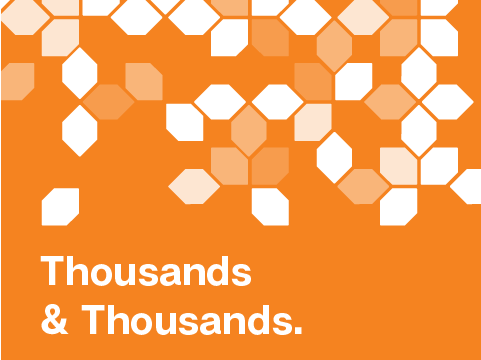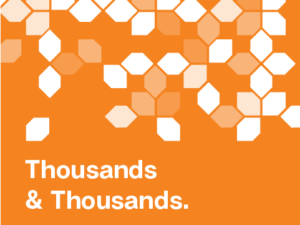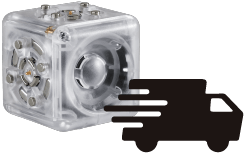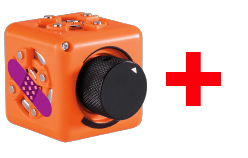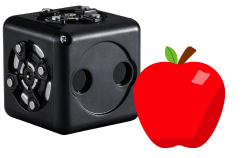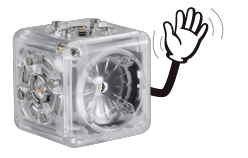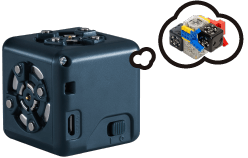My first science project involved growing 84 bean plants and measuring how they fared when watered with varied salinity solutions. All I really had to do was measure the salt and water, bottle it, and then grow the plants and water them on schedule. The next year I set my sights on something harder and collaborated with UCONN Avery Point’s Project Oceanology to identify possible ways of obtaining clams. Why clams? Well, I’d done a summer project with Project Oceanology on clam kidney stones indicating water pollution and I wanted to extend my research. More clams! More sites!
There I was, an eighth grader, reaching out to marine research facilities and asking them if they would afford me access to the clams they obtained. I bought fancy paper and wrote letters introducing my previous results and the hypothesis and scope of this project. Then I proposed that if they were doing species collection, could they please give me clams that would otherwise just be counted and thrown back in exchange for sharing my data and results? I learned the term “Principal Investigator” and appealed to those people through the Environmental Protection Agency and state colleges around Connecticut. In addition to writing letters, I learned to interpret water quality data, mastered lab equipment, and I had to make good on my promise to share data and results. I even had an innovative moment because the middle-school science classroom I was in outfitted me to titrate, dissect, centrifuge, and use a microscope, but had nothing powerful enough for me to lever open the clams’ stubborn shells. Problem solved – my friends and I gleefully discovered that dropping the clams from over our heads onto the pavement did the trick – after all, I didn’t need the clams or their shells, just their kidneys.
I think this is the value of doing a science project – the perseverance to follow research through and break it into manageable pieces, the realization that even if you choose a topic you are enamored with you will likely cross discipline lines to bring it to fruition, and the unforeseen problems along the way (I have vivid memories of those kersplatted clams imprinted on my memory). So, when I was offered the chance to judge Boulder Valley School District’s High School and Middle School Science Fair, I leapt at the chance.
Immediately, I thought, What a great opportunity to partner with the schools here while wearing a name-tag that says, “Christie Veitch, Modular Robotics.” But, to be honest, my motivations ran deeper than making contacts in our backyard. We’ve been having this conversation about STEM education during my first month here and discovering over and over that true STEM ed is mostly only happening in ways that are self-selected by students and parents. Because curricula standards still point mostly at Science and Math, and because those are usually taught as separate subjects, there isn’t very much interdisciplinary STEM for all students. While some great schools offer electives in computer programing or in engineering and production or even Pre-engineering Programs, most are addressing students’ interests in science, technology, engineering, and math through after-school clubs or other out-of-school opportunities. I figured that if Modular Robotics is going to be in the business of trying to re-shape how STEM can be hands-on, fun, and interdisciplinary in school, I wanted to see examples of what students can do when given that opportunity and some resources and support.
As it turns out, they can do a LOT. Some students were apprenticed to college laboratories, and others developed research or engineered and tested new products on their own. Some worked alone and others in teams. I was assigned to judge engineering projects but saw projects as diverse as using Chitosan (ground up shrimp tails!) to create scaffolds for new human tissue to grow on to using algae to produce fuel to cryogenic cooling mechanisms to to biometric gun safety handles to potato cannons and water balloon launchers.
Engineering is a broad category, it seems, and in any case where a student made something new or tested the feasibility of producing a new mechanism, they were considered an “E” project. Time and again, I saw that the best projects, regardless of mentoring or group vs. individual research, were the ones where students had to look beyond one academic discipline – potato cannons require knowledge of physics and chemistry, and while building tissue scaffolds is engineering, it’s also biology. Some of the best projects I saw combined biology or behavioral science with electrical or product engineering. Those students thought clearly about the next steps and potential applications of their research and many had to teach themselves to use Arduino or to program in Python in order to make the leap from concept to producing a working something. As I asked students questions about their designs and tests, I heard many stories of iterative attempts to make a breadboard circuit do their bidding or last-minute trip to Home Depot to get a part they hadn’t anticipated but suddenly realized they needed.
After my day at the fair, as I told stories of algae fuel and biometric firearm safeties or chairs outfitted with a design allowing students to lean back and not fall over, a paraphrase of a response I heard more than a couple of times was, “Hmm, privileged kids/schools have lots of resources to do this.” It’s true – Boulder Valley School district probably offers more resources and support for these STEM-focused students than most public schools in the land. But, for me, the story was, Look what students CAN do when given the opportunity to aim bigger than the assignment for this week or what’s been whittled down into this chapter. See what self-direction and initiative and resources and support can produce – clever engineering that is relevant in today’s world and projects that succeeded precisely because they had little regard for which discipline they belonged to but, instead, voraciously pursued the best methods and answers to their questions and challenges.
To me this is the hopeful story about STEM – it doesn’t have to be divided into its components in order for learning to take place. (In fact, that division is probably an invention of perceived necessity in order to define what is testable; kids care about it not at all.) But my day at the fair was also an optimistic realization about students – they are curious about how things work or don’t work, and enthusiastically participate in posing their own solutions. They will dive headlong into their interests, even (and sometimes especially) when it requires research and skills far beyond their experience. It strikes me that seeing what students can do when given access to resources and support and the chance to pose real questions is a better bar to set than matching tests and books up to a list of the minimum objectives, but that’s the subject for another blog post. For now, I’m just honored to have seen some really cool science, and to have met with kids and teachers that believe this kind of student work is not only feasible, but deeply worthwhile.
